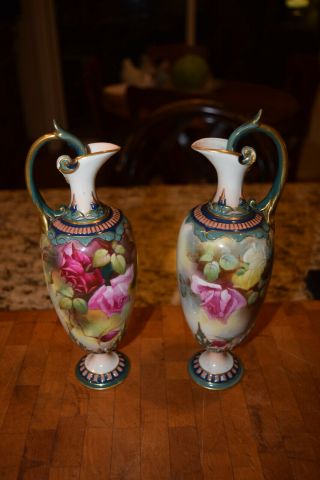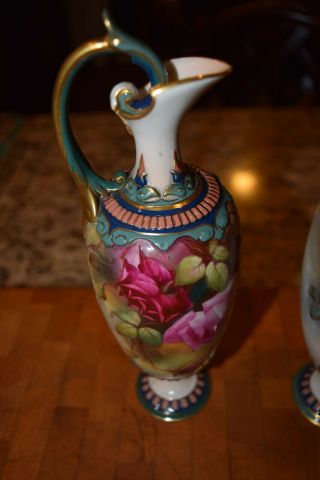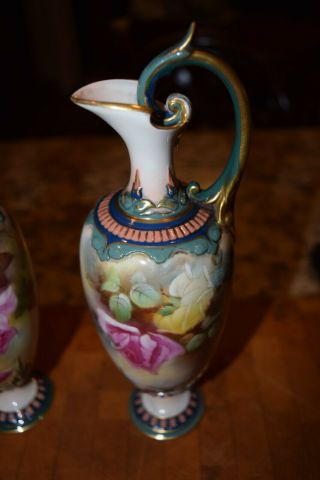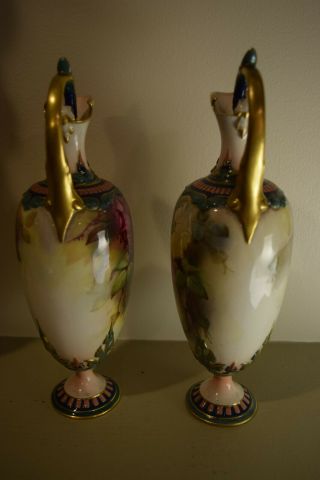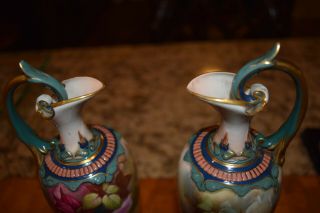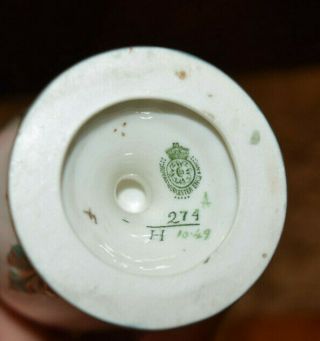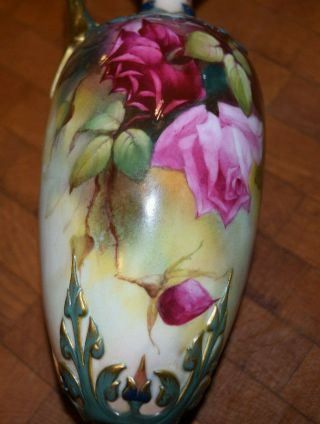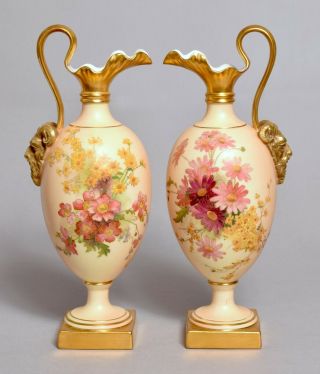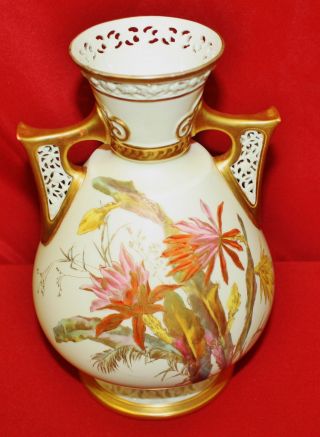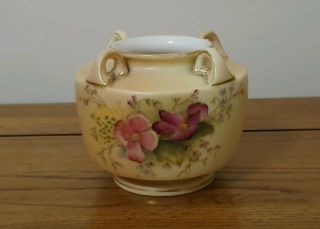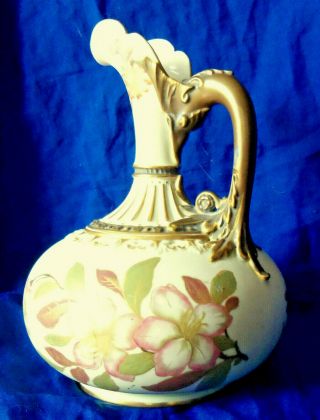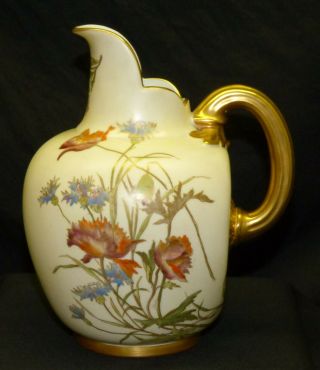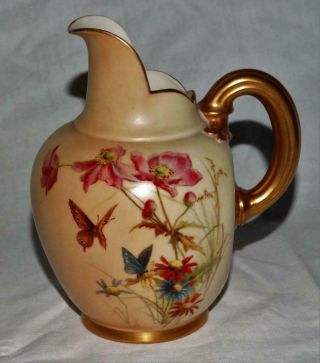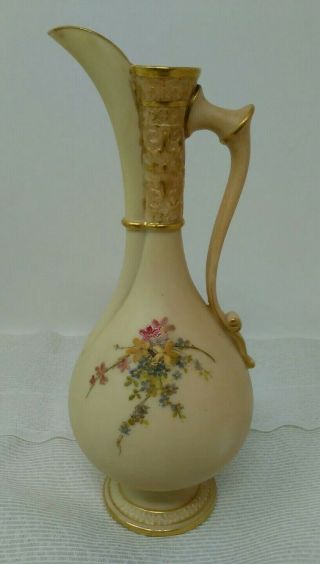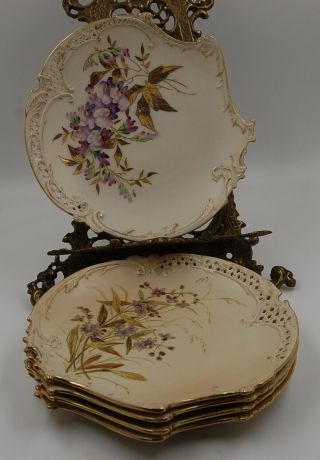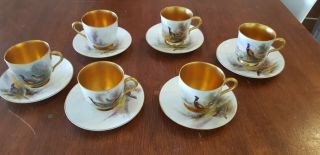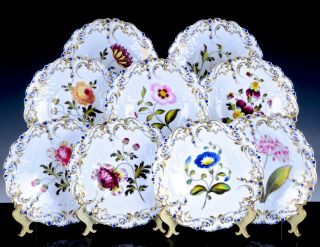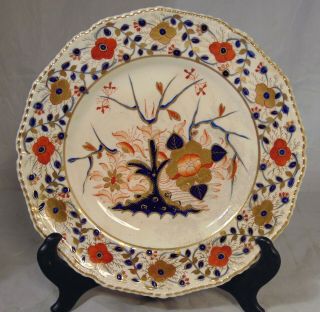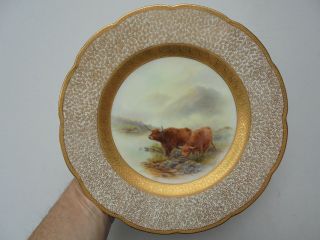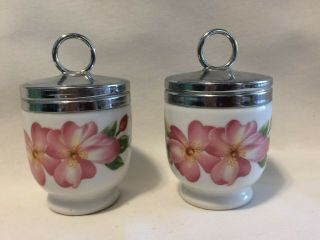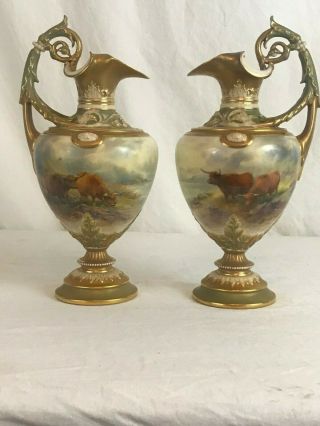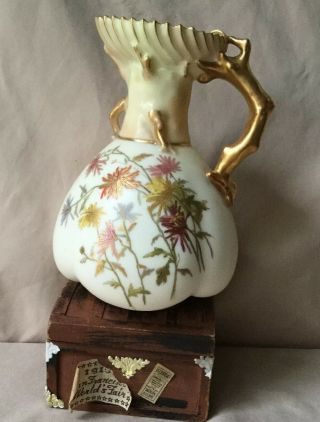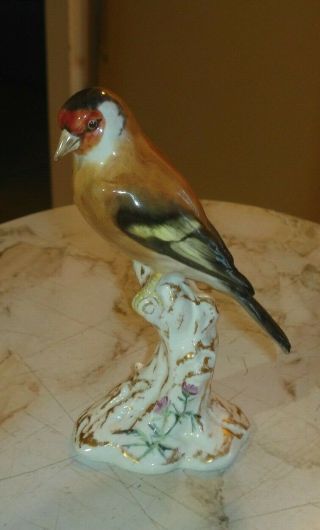Pair Rare Royal Worcester Blush Ivory 1892 Ewers 1 Dot 274 Porcelain
Item History & Price
| Reference Number: Avaluer:12640666 | Object Type: Urn |
| Original/Reproduction: Antique Original | Style: Art Nouveau |
| Color: Blush Ivory |
Beautifully painted, gilded and the glaze is in excellent antique condition considering the age, which is 1892 (this is a one dot post 1891 when Royal Worcester was added to the mark. One dot indicates a year from 1891, or 1892. I see little evidence of wear. Gilding is in great shape.
Visit the Royal Worcester online site to learn more, but I have reprinted the section about Blush Ivory from the website here. "Royal Worcester’s development of a new range of ornamental wares in the 1890s was inspired by the European Art Nouveau style, a self-consciously ‘New Art’ and modern movement that did not look to the past, but to nature for it’s inspiration. Royal Worcester produced fashionable porcelain that was based on organic forms such as shells, gourds, leaves, tree trunks and flower heads. The porcelain was designed to look as though it was made from natural materials, such as coral, ivory, wood and wicker. The most popular shapes included shell dishes and baskets, coral handled jugs, melon jars and tusk jugs. This Diverse range of shapes was decorated with asymmetrical and scattered floral arrangements, called ‘Art Sprays’, in muted colours, embellished with gold.The range of ware we know today as ‘Blush Ivory’ was so successful by 1900 that Royal Worcester applied the decoration to virtually every shape they could produce, including numerous Indian and Japanese shapes and even Classical figures that had been originally designed for other types of decoration years earlier. This strayed from the original concept of a new, natural style, but still found favour with the middle classes who were desperate to fill their homes with decorative porcelain, which they purchased from the brand new department stores that were opening in major towns." Read more at https://www.museumofroyalworcester.org/learning/research/products/blush-ivory/
Success with this design, at a time when American trade was dropping, must have been a great boost for the company, but it brought it’s own problems. Royal Worcester found they had many imitators, especially in Europe where the Blush Ivory style was copied very closely and even today many pieces made by Austrian and German firms are mistaken for Royal Worcester. Closer to home Edward Locke and James Hadley were both taken to court by Royal Worcester Art Director, Richard Binns, to ensure that their wares were clearly marked and could not be sold as (or be mistaken for) Royal Worcester.Identification marks and numbers that appear on the base of each piece were vital as part of Worcester’s campaign to prevent faking and they tell us a lot about the objects. In addition to the Royal Worcester factory mark, with it’s date coding system of dots, the large printed numbers referred to the mould from which the object was made. A printed ‘Rd No.’ in a box is the patent registration number for the design and the small hand written initials on the underside of a piece referred to the gilder, (This was the factories way of tracking the use of its most expensive raw material!). Impressed numbers and a letter referred to the month and year of manufacture. The production of Blush Ivory was a complex and expensive process. First the shape was cast from liquid Parian clay (a cream coloured porcelain), in plaster of Paris moulds. Often an item was made in several pieces that were then assembled (using liquid clay or slip) and any impressed marks were added before the first or biscuit firing. Next a gloss ivory glaze was added to the inside of the piece and it was dipped into a matt straw-coloured glaze to cover the outside. This was then finished with areas of soft apricot glaze, sprayed onto the piece using the newly invented aerograph machine. Areas such as the handle, that were to be finished in heavy gold, were also painted with a dark coral coloured glaze or undercoat. The pot was then fired in the kiln a second time.On the majority of pieces the next stage was to add a fine sepia printed outline for the decoration, and the printed factory mark, which was fixed with a low temperature (3rd) firing before the artist added the colours to the flowers, insects or grasses over the top. After the fourth firing, 22 carat gold was printed over the top of the painting, giving a shimmering metallic effect and gold would also be applied by brush to the edges, feet and handles. After the fifth and last firing in the kiln, the gold would be burnished or polished with bloodstone to give the piece its finished elegance.Most Blush Ivory pieces were decorated with arrangements of flowers such as scabious, marguerites, pansies, forget-me-nots, and chrysanthemums. The original sprays of flowers were drawn by Edward Raby and Frank Roberts. Their designs were then engraved by hand onto copper plates from which printed outlines were taken. The initials ER sometimes appear as part of the print, acknowledging the design of Edward Raby. As the Royal Worcester painters were not allowed to sign their work until after 1900, it is impossible to identify the work of most individual artists, however some very rare examples of Blush Ivory porcelain were entirely hand painted by Edward Raby who was allowed to sign his name before the turn of the century.Blush Ivory porcelain was still being made around 1910, but as the popularity of Art Nouveau waned in Europe, Royal Worcester stayed ahead of the game by looking to more angular, sharp, brightly coloured designs inspired by man made things such as iron, steel, ships, trains, radio waves and fast cars. The evolution towards Art Deco had begun and production of Blush Ivory ceased around 1914." From https://www.museumofroyalworcester.org/learning/research/products/blush-ivory/




